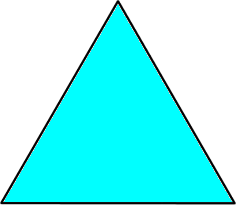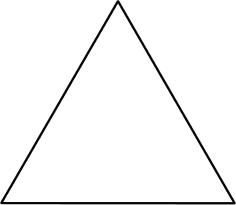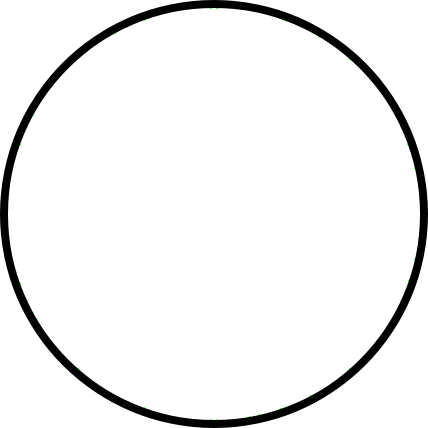Richard Feynman Describes the Waves Running Through Our Environment
Try to imagine what the electric and magnetic fields look like at present in the space of this lecture room. First of all, there is a steady magnetic field; it comes from the currents in the interior of the earth - that is, the earth's steady magnetic field. Then there are some irregular, nearly static electric fields produced perhaps by electric charges generated by friction as various people move about in their chairs and rub their coat sleeves against the chair arms. Then there are other magnetic fields produced by oscillating currents in the electrical wiring - fields which vary at a frequency of 60 cycles per second, in synchronism with the generator at Boulder Dam. But more interesting are the electric and magnetic fields varying at much higher frequencies. For instance, as light travels from window to floor and wall to wall, there are little wiggles of the electric and magnetic fields moving along at 186,000 miles per second. Then there are also infrared waves travelling from the warm foreheads to the cold blackboard. And we have forgotten the ultraviolet light, the X-rays, and the radiowaves travelling through the room.
Flying across the room are electromagnetic waves which carry music of a jazz band. There are waves modulated by a series of impulses representing pictures of events going on in other parts of the world, or of imaginary aspirins dissolving in imaginary stomachs. To demonstrate the reality of these waves it is only necessary to turn on electronic equipment that converts these waves into pictures and sounds.
If we go into further detail to analyze even the smallest wiggles, there are tiny electromagnetic waves that have come into the room from enormous distances. There are now tiny oscillations of the electric field, whose crests are separated by a distance of one foot, that have come from millions of miles away, transmitted to the earth from the Mariner [2] space craft which has just passed Venus. Its signals carry summaries of information it has picked up about the planets (information obtained from electromagnetic waves that travelled from the planet to the space craft).
There are very tiny wiggles of the electric and magnetic fields that are waves which originated billions of light years away - from galaxies in the remotest corners of the universe. That this is true has been found by 'filling the room with wires' - by building antennas as large as this room. Such radiowaves have been detected from places in space beyond the range of the greatest optical telescopes. Even they, the optical telescopes, are simply gatherers of electromagnetic waves. What we call the stars are only inferences, inferences drawn from the only physical reality we have yet gotten from them - from a careful study of the unendingly complex undulations of the electric and magnetic fields reaching us on earth.
There is, of course, more: the fields produced by lightning miles away, the fields of the charged cosmic ray particles as they zip through the room, and more, and more. What a complicated thing is the electric field in the space around you!
Notes:
Need to find the source of this quote.
Folksonomies: todo science wonder
Taxonomies:
/business and industrial/energy/electricity (0.535810)
/technology and computing/consumer electronics/camera and photo equipment/telescopes (0.441838)
/sports/surfing and bodyboarding (0.399485)
Keywords:
magnetic fields (0.925315 (positive:0.801874)), electromagnetic waves (0.779980 (negative:-0.291087)), tiny electromagnetic waves (0.677368 (neutral:0.000000)), steady magnetic field (0.632757 (positive:0.670323)), Waves Running (0.600358 (positive:0.204127)), infrared waves (0.585212 (neutral:0.000000)), electric field (0.581705 (positive:0.408173)), optical telescopes (0.577515 (positive:0.467788)), cosmic ray particles (0.576891 (neutral:0.000000)), greatest optical telescopes (0.573797 (positive:0.467788)), room (0.567000 (positive:0.120988)), Richard Feynman (0.524769 (positive:0.204127)), electric charges (0.523167 (negative:-0.223925)), imaginary stomachs (0.522821 (negative:-0.629679)), Environment Need (0.521940 (positive:0.204127)), lecture room (0.520721 (positive:0.244338)), cold blackboard (0.512807 (neutral:0.000000)), various people (0.512687 (negative:-0.270432)), space (0.512218 (negative:-0.163143)), higher frequencies (0.511062 (neutral:0.000000)), imaginary aspirins (0.510928 (negative:-0.393653)), 60 cycles (0.510283 (neutral:0.000000)), enormous distances (0.510052 (negative:-0.219335)), chair arms (0.509528 (neutral:0.000000)), warm foreheads (0.508851 (neutral:0.000000)), electronic equipment (0.508205 (negative:-0.489130)), jazz band (0.507978 (neutral:0.000000)), Boulder Dam (0.506973 (neutral:0.000000)), remotest corners (0.506894 (negative:-0.257117)), wiggles (0.506740 (positive:0.705787))
Entities:
Richard Feynman:Person (0.790555 (positive:0.204127)), ultraviolet light:FieldTerminology (0.770654 (negative:-0.413076)), Boulder Dam:GeographicFeature (0.689337 (neutral:0.000000)), synchronism:City (0.669587 (neutral:0.000000)), Mariner:Organization (0.660927 (negative:-0.272628)), wires:Person (0.625470 (neutral:0.000000)), 186,000 miles:Quantity (0.625470 (neutral:0.000000)), one foot:Quantity (0.625470 (neutral:0.000000))
Concepts:
Electromagnetism (0.971155): dbpedia | freebase
Magnetic field (0.901471): dbpedia | freebase
Electric charge (0.702535): dbpedia | freebase | opencyc
Electron (0.685650): dbpedia | freebase | opencyc
Electric field (0.670584): dbpedia | freebase
Maxwell's equations (0.658825): dbpedia | freebase | yago
Electromagnetic radiation (0.657037): dbpedia | freebase | opencyc
Electromagnetic field (0.626889): dbpedia | freebase | yago
Triples
 A Universe of Waves
A Universe of Waves
Richard Feynman Describes the Waves Running Through Our Environment > Contrast > The Universe is Made Up of Two Kinds of WavesFeynman and Sir Jeans on the waves permeating our Universe. Feynman focused on the invisible that fall into a myriad of categories, Jeans focuses on two categories.
 Feynman's and Carson's Waves
Feynman's and Carson's Waves
The Many Waves and How They Interact in the Ocean > Example/Illustration > Richard Feynman Describes the Waves Running Through Our EnvironmentCarson describes the waves of the ocean and their complex interactions, while Feynman describes a world of waves.
 History in Waves
History in Waves
Richard Feynman Describes the Waves Running Through Our Environment > Similarity > The Rhythms of NatureWaves travel across the universe in radiation, describing celestial objects we cannot see, and waves put layers in rock, describing times past.





